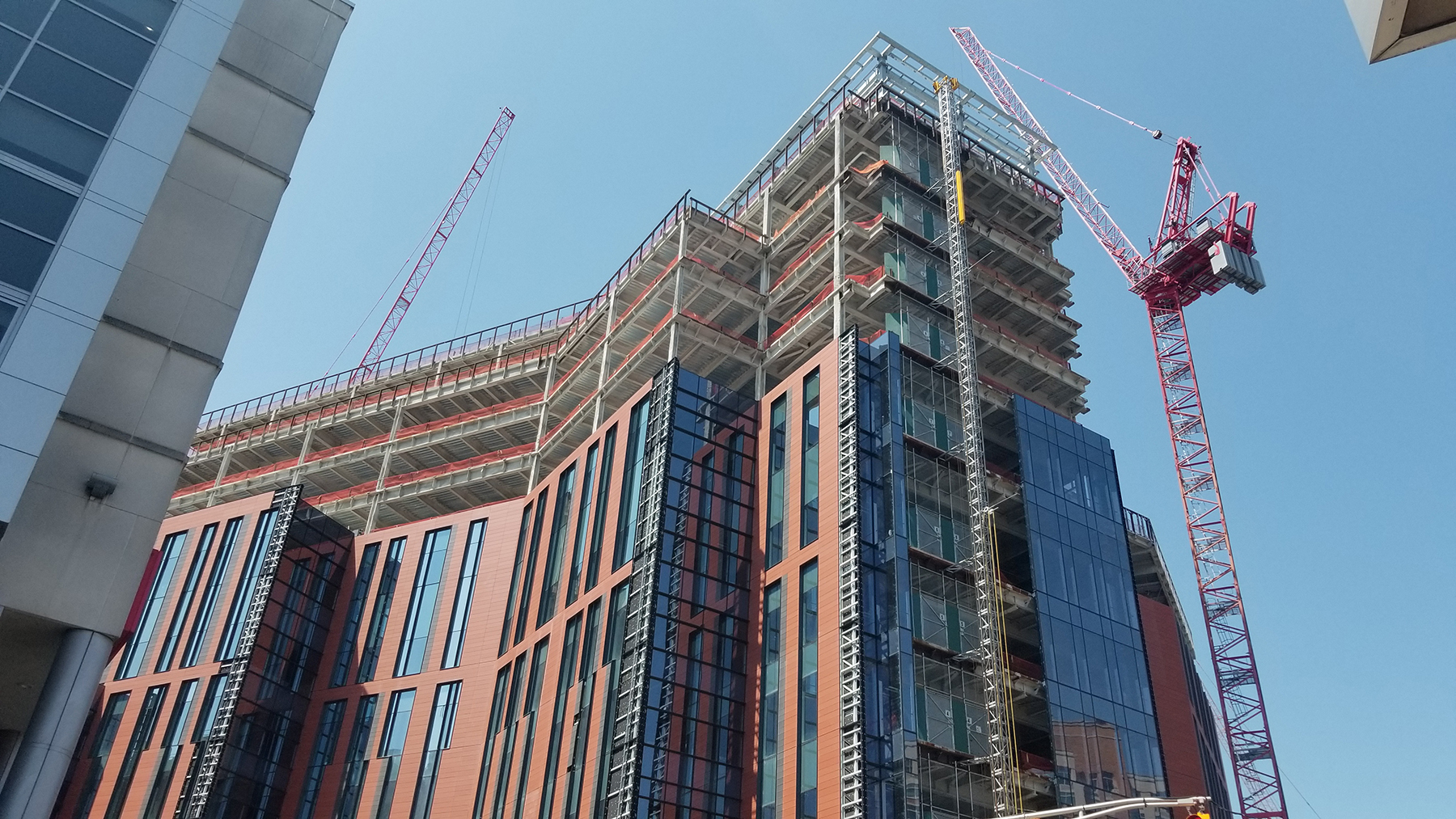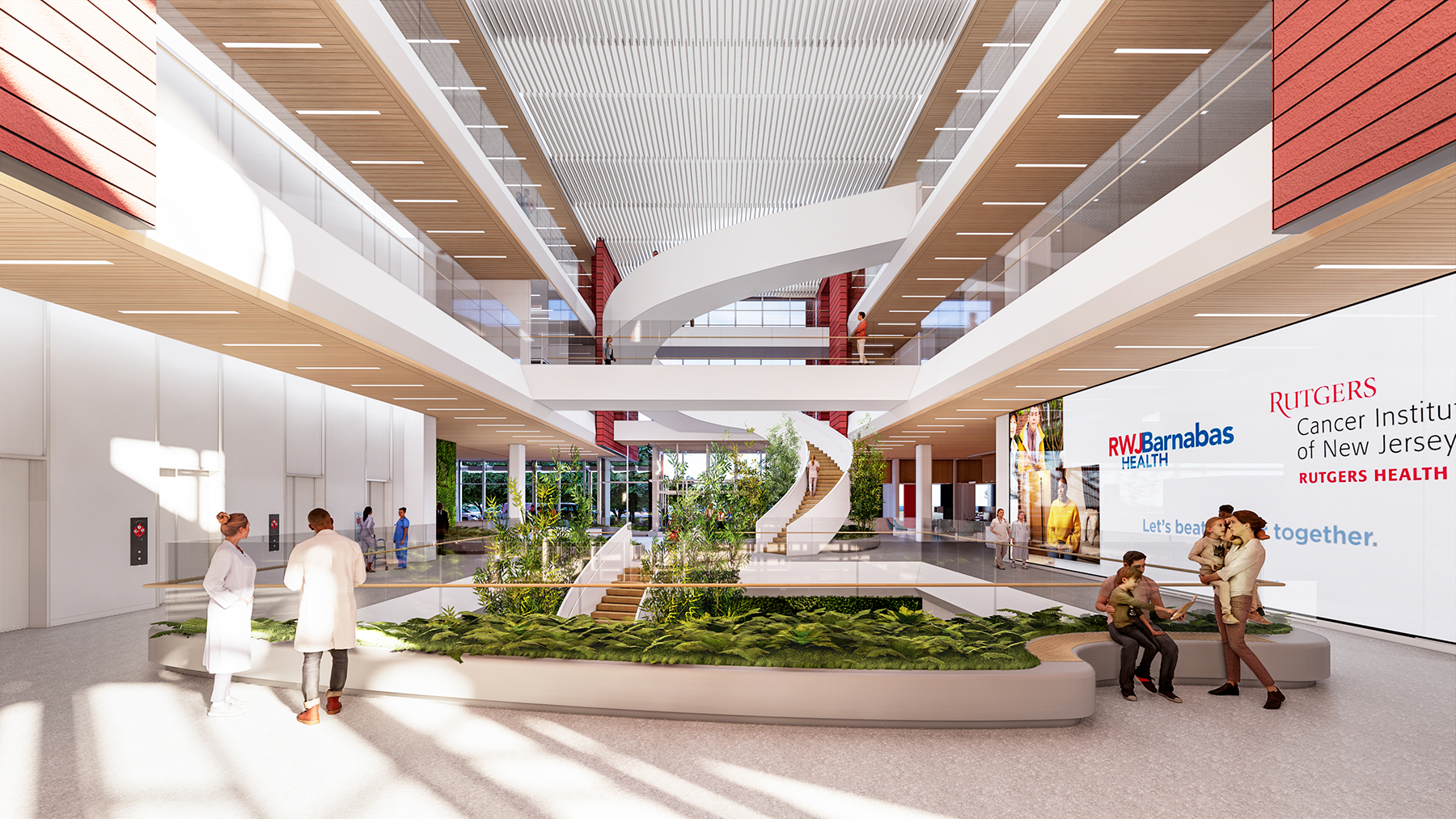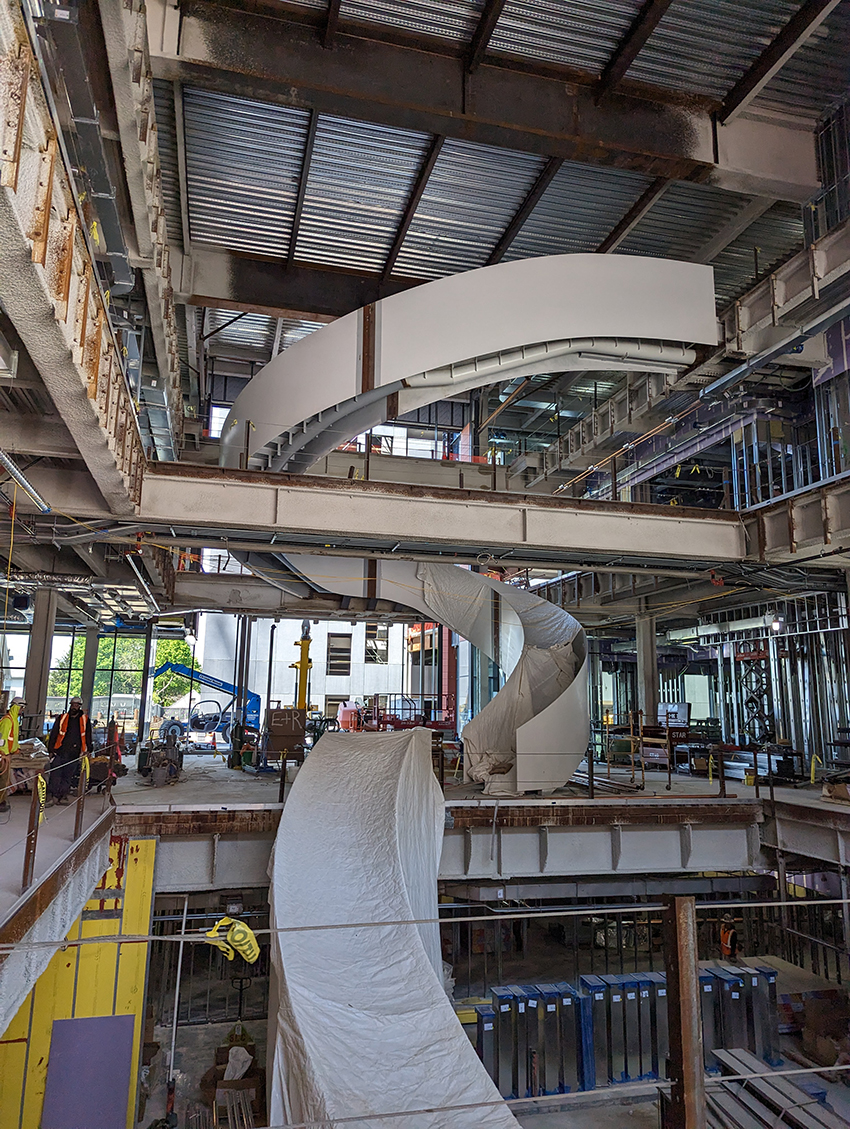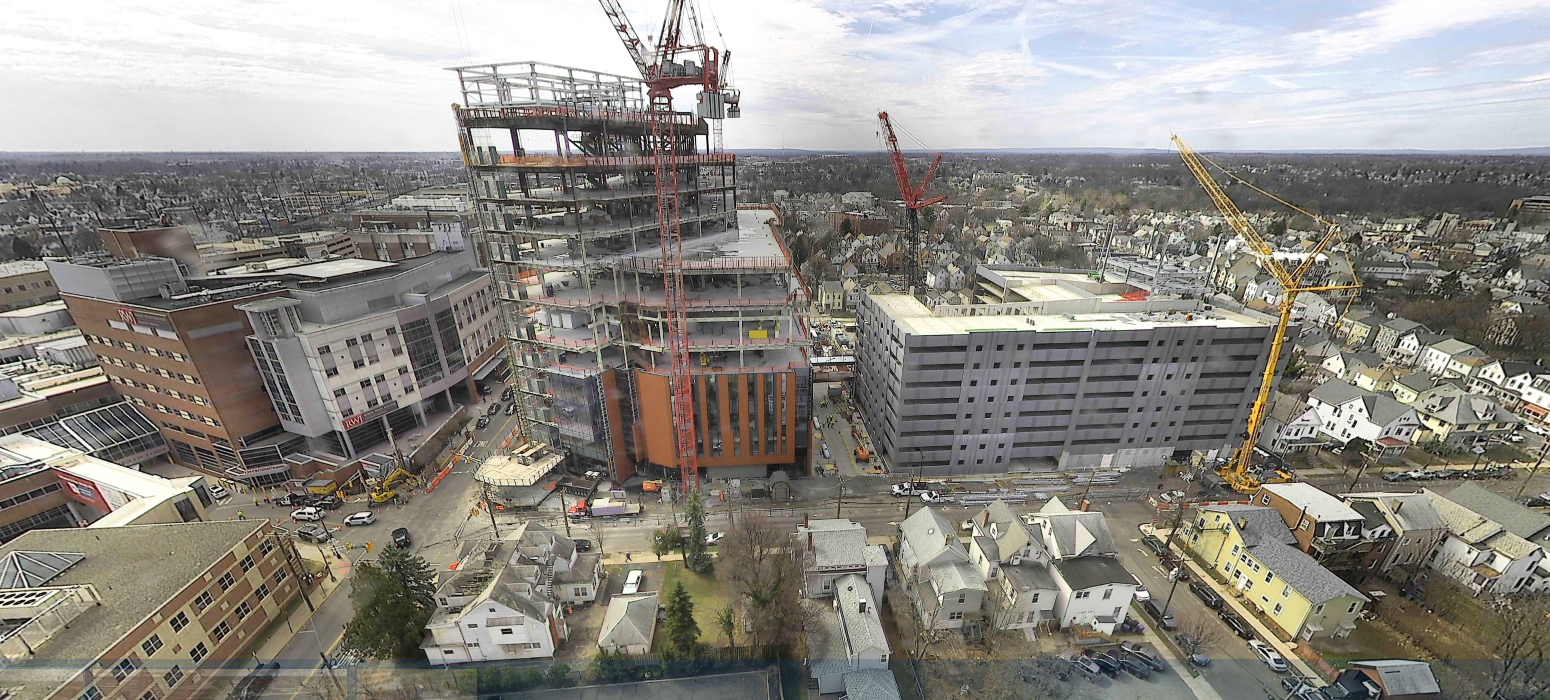By Robert L. Reid
The Jack and Sheryl Morris Cancer Center is under construction in New Brunswick, New Jersey, and to protect its specialty cancer treatment equipment from vibrations, a series of reinforced-concrete vaults are being built in the tower’s basement. These vaults are also critical to the center’s structural design, explains Kyle J. Terry, P.E., a senior associate in the Philadelphia office of O’Donnell & Naccarato, the project’s structural engineer.

The 12-story facility will boast a large, internal four-story atrium through which a large, monumental spiral staircase will rise. Interior pedestrian bridges will crisscross the large open atrium and laterally tie together the sides of the building, which will also be connected via pedestrian bridges to a parking garage and the nearby Rutgers Cancer Institute of New Jersey.
The medical tower’s design features a largely glazed, metal panel facade that steps back repeatedly.
The facility will provide comprehensive health care treatment related to cancer as well as cancer-focused research and educational services — a “bench to bedside” approach that will combine all the cancer services under one roof, Terry notes.
The cancer services that will be offered by the center include several linear accelerators and other specialty cancer treatment equipment with precise vibration criteria or radiation shielding requirements, Terry says. Consequently, the project features the subterranean concrete-framed vaults to house such medical devices in the facility’s one underground level, with walls ranging up to 8 ft thick as well as varying floor slab thicknesses.

Elsewhere throughout the building, the engineers designed structural systems to meet the specific stiffness, vibrational, and rotational deflection requirements for medical equipment that will be suspended from the ceiling framing in locations such as the operating rooms on a seventh-level surgical platform, Terry adds.
St. Louis-based HOK was the project’s architect, with the work led by the firm’s Philadelphia and New York City offices. Langan, of Parsippany, New Jersey, served as the civil and geotechnical engineer. New York City-based AKF Group served as the mechanical, electrical, and plumbing engineer. The general contractor was a joint venture of Joseph Jingoli & Son Inc., based in Lawrence Township, New Jersey, and LF Driscoll Company LLC, based in Bala Cynwyd, Pennsylvania.
Structural solutions
Founded on a combination of shallow spread footings and reinforced-concrete mat foundations supported on weathered schist, the cancer center features composite steel framing as its gravity support system. Vertical steel braced frames make up the primary lateral support system with moment frames in key locations to help mitigate potential rotation of the structure, Terry says.
The excavation extended typically 20 ft below grade — deeper in sections because of elevator and equipment pits — and had extensive underpinning and support via soil nailing to protect the adjoining sites, which included a church and residential properties, Terry notes.

The lower portion of the building features the open atrium, crisscrossed by three interior pedestrian bridges on the second level and two on the third level. These support vertical loads across the open space and laterally tie together the sides of the building, Terry explains. A series of large steel plate transfer girders at the fourth and fifth floors support the columns that frame the floors above the atrium as well as the columns for the second and third levels. Another 60 or so transfer systems are concealed within the walls at various locations throughout the building where columns are interrupted, Terry adds.
Due to the building’s stepped facade, the structure must accommodate cantilevered floor framing that ranges typically from 3 to 5 ft, up to as much as 20 ft in locations, Terry says. There are also steel-framed, glazed canopies over the entrance and drop-off areas that cantilever by roughly 25 ft.
Adjacent connections
The exterior pedestrian bridges will connect the new building to the existing Rutgers Cancer Institute of New Jersey building — also engineered by O’Donnell & Naccarato — as well as to an adjacent new parking garage structure that will service the new medical center and which was a separate project designed by a different team, Terry notes.
The steel-framed pedestrian bridges are structurally independent of the buildings they link to and feature expansion joints at each end as well as reinforced-concrete columns supported on micropiles that had to be coordinated with underground utilities.

Mechanical systems equipment for the cancer center’s central utility plant is in the basement and on the roof of the adjacent new 10-story parking structure.
Constructing the cancer center has been challenging, Terry adds, given the project’s fast-paced schedule and the constrained site, which made it difficult to erect tower cranes around the building. A section of road between the new building and the garage, directly above a portion of the new building’s basement, also had to be completed early, using a lightweight soil substitute rather than the subsurface material originally planned, so that the area could be used to stage and move construction materials.
Part of the Rutgers Cancer Institute of New Jersey and RWJBarnabas Health medical complex, the new facility is expected to open late in 2024.
This article is published by Civil Engineering Online.



